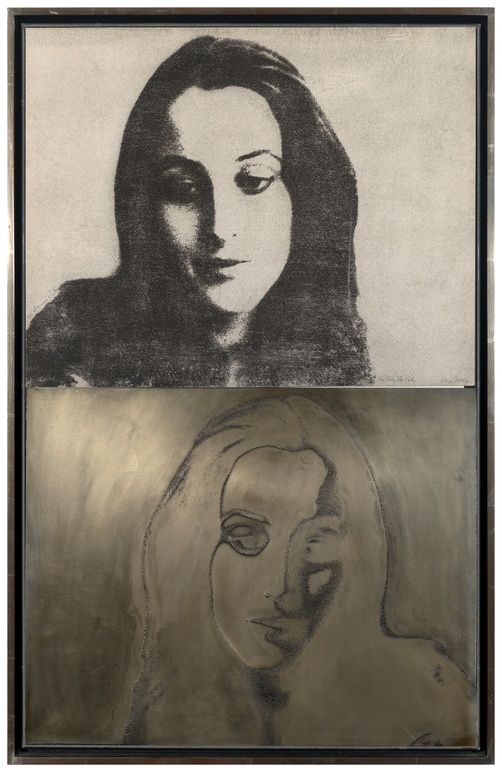
image size: 28 1/8 x 17 3/4 in.
Inscribed in pencil, on print, lower right: Rue Even For Ruth Naomi Savage / 1975
Object Label
Extensions of the Eye explores the versatility of the photographic medium–specifically focusing on themes of process, identity, and spatial depth. Using the body as a point of departure, the exhibition examines the works of Barbara Morgan (American, 1900-1992), Naomi Savage (American, 1927-2005), and Kunié Sugiura (Japanese, b. 1942). Employing non-traditional methods and technologies to create their works, these photographers investigate image and identity, and allow for alternative ways to understand bodies in relation to the world around them. These processes enable Morgan, Savage, and Sugiura to achieve a rich formal language and to challenge or disrupt the viewer’s notion of “real” space and its relationship to photography.
Developed in the late 1830s by European inventors, including Louis Daguerre, Joseph Nicéphore Niépce, and Henry Fox Talbot, photography paved the way for a new scientific art form that appeared to capture objective reality. Although the first forms of the medium endeavored to duplicate objects from nature, focusing on people, landscapes, and still lifes, the medium evolved so that it can no longer be defined solely by the desire to reproduce a shared visual reality. Indeed, as these artists demonstrate, photography is uniquely suited to explore more complex, multivalent approaches to reality.
Process
Although alternative processes date back to the 1850s with Oscar Rejlander and Henry Peach Robinson’s combination printing—an early form of photomontage—it was not until the early twentieth century that the manipulation of photographs became more widely employed and accepted.
Through the mentorship of her uncle Man Ray, Naomi Savage carried this tradition forward in her works from the mid-century and on, combining photography with non-photographic techniques. Savage mixed photography with collage, photo-etching, and rephotography to create repetition, mirroring, and echoing of forms. Savage both embodied and disembodied her subjects in an exploration of the dynamics of bodies in space and the connections between our physical selves and our identity.
By employing alternative photographic techniques Barbara Morgan, Naomi Savage, and Kunié Sugiura “rearrange” the sense of reality assumed in photography. All three artists work within the subtly austere vocabulary of black and white photography, a choice which intensifies the impact of their constructed spaces.
Identity
Morgan, Savage, and Sugiura all raise questions of identity in their work, using the body as a way to explore the complex relationships between self, image, and perception.
Naomi Savage constructs idiosyncratic female portraits that both empower and exploit her subjects: some challenge the viewer through direct eye contact, but also appear passive, as if handing over all agency to the viewer. Savage manipulates her subjects through repetition, the creation of multiples, and by excising them from the image, in order to question how we understand female identity through the feminine body. Through her representations of female figures, Savage addresses the feminist discourse, challenging the viewer’s understanding of beauty and identity.
Space
All three artists investigate ways of representing space and depicting spatial relationships. Through technical processes and compositional devices, they challenge our perception of “real” space. Expanding and flattening their compositions–sometimes simultaneously–they push and pull the viewer, complicating our relationship to the pictorial space.
Naomi Savage expands on the relationship between photography and space by frequently creating physical depth not usually possible within a flat medium. For example, she constructs a telescoping photo-collage in which the subject has been cut away to leave a receding void. By subsequently rephotographing her “photographic sculpture,” she negates this constructed space, eliminating the piece’s actual three-dimensionality and replacing it with an illusion of depth. –Laura Mintz ’12
From the exhibition: Extensions of the Eye: Three Women Photographers (February 18 – April 15, 2012)
Ongoing Research

